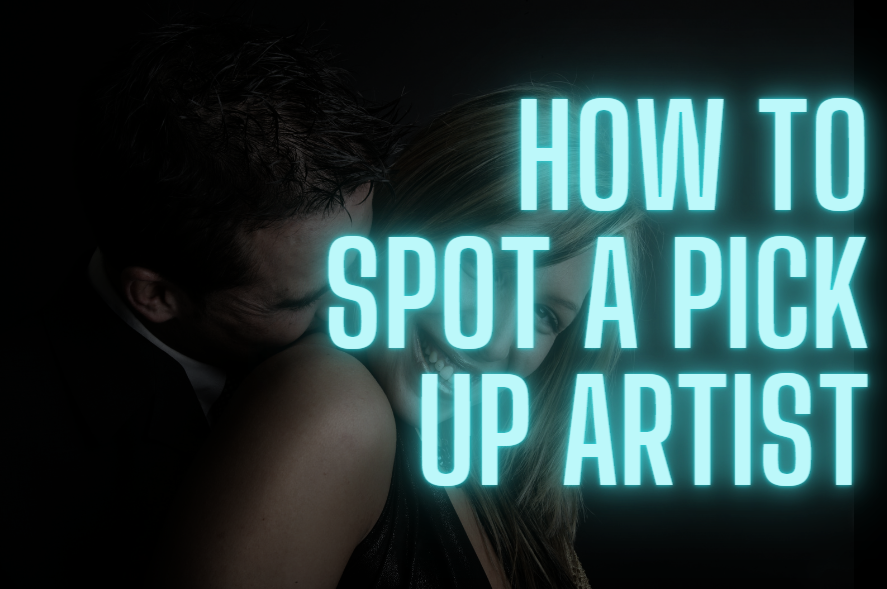Introduction
Modern dating has evolved with advancements in technology and changes in societal norms, birthing a variety of new trends and approaches to finding love or companionship. Amidst this evolution, however, an exploitative dating culture has emerged, with pick-up artists (PUAs) at the forefront, practicing questionable tactics in their pursuit of personal satisfaction rather than genuine connections. The aim of this piece is not to instill fear or cynicism but to educate and empower individuals with the ability to discern genuine intentions from calculated manipulation and spot pick up artists.
A pick-up artist, in the broadest sense, is someone who uses strategic behaviors and scripted routines to attract and seduce others. While some may argue that these tactics simply enhance one’s dating skills, many of these practices are often based on psychological manipulation and can lead to harmful emotional consequences for the recipients.
Understanding the modus operandi of pick-up artists is crucial in today’s complex dating scene. Recognizing these tactics can provide a significant defense against emotional investment in an insincere interaction, thereby protecting one’s well-being in the long term.
Overview of Pick-Up Artist Tactics
The tactics employed by pick-up artists are multifaceted and can vary from person to person, but they often share a common theme: exploitation of emotional vulnerability. These strategies may include the use of negging (delivering a backhanded compliment or light insult to undermine someone’s confidence), psychological manipulation, and high-pressure scenarios aimed at disarming an individual’s usual defenses.
While these methods might initially seem harmless or even charming, they can result in emotional distress and confusion. This is because the tactics employed by pick-up artists often revolve around creating a power imbalance in the interaction, making it easier for them to control the situation to their advantage. Understanding these tactics is the first step towards safeguarding one’s emotional well-being in the dating world.
The 9 Ways to Spot Pick-Up Artists
Fast Escalation
One key characteristic of a pick-up artist is the tendency to escalate the relationship at a rapid pace. This involves pushing for intimacy – either physical or emotional – much sooner than what might be typical in a healthy, consensual relationship. The aim of this tactic is to create a sense of urgency and excitement, clouding the judgement of the person on the receiving end. In a genuine relationship, intimacy is built over time, based on mutual respect, comfort, and shared experiences.
Negging
“Negging” is a common tactic employed by pick-up artists. This technique involves giving backhanded compliments or subtly insulting comments intended to undermine the confidence of the person they are trying to attract. The goal is to make the person feel insecure and, consequently, more open to advances. Spotting negging can be a significant sign that one is dealing with a pick-up artist.
High-Pressure Tactics
Pick-up artists often create situations that put the other person under pressure. This can involve making plans on short notice or expressing intense feelings early on in the interaction. High-pressure situations are designed to make the person feel that they need to make a decision quickly, which can often lead to choices they may not make under normal circumstances.
Manipulation of Social Dynamics
Pick-up artists often try to present themselves as the most desirable or dominant person in the room. They may attempt to control social situations, either by drawing all attention to themselves or by subtly devaluing others to enhance their own status. Understanding this can help identify such manipulative behavior.
Scripted Lines and Stories
Often, pick-up artists use scripted lines or rehearsed stories to engage or charm their target. These can sound overly smooth or seem slightly out of place in the conversation. They might also repeat the same stories or lines in different settings, which could become apparent over time.
Lack of Genuine Interest
Although pick-up artists often show initial enthusiasm, this interest can often seem surface-level. They may seem more interested in talking about themselves or steering conversations towards topics that play to their rehearsed scripts, rather than showing a deep, genuine interest in getting to know the other person.
Constantly Challenging Boundaries
Pick-up artists may frequently test and push personal boundaries. They might do this by suggesting activities that make the other person uncomfortable, making inappropriate comments, or trying to move too fast in the relationship. Constant boundary-pushing is a clear red flag.
Inconsistency Between Actions and Words
Pick-up artists may promise a lot but fail to follow through with their actions. They might be charming and attentive one moment, then distant and unresponsive the next. This inconsistency can be a major warning sign.
Inflated Ego and Narcissism
Finally, pick-up artists often display signs of narcissism, including a grandiose sense of self-importance, the belief that they are special or unique, and a strong sense of entitlement. They may constantly seek admiration and be easily hurt by criticism. Recognizing these traits can help in identifying a pick-up artist.
These signals, when present, should prompt careful evaluation and thought. The most crucial thing is to trust personal feelings and intuition when these behaviors become apparent. These signs are not conclusive proof that one is dealing with a pick-up artist, but they can certainly serve as strong indicators.
Tips for Protecting Oneself from Pick-Up Artists
Recognizing pick-up artist tactics is the first step towards protection, but knowing how to navigate these situations is equally important. Setting and maintaining boundaries is vital; these boundaries can be related to physical touch, the pace of the relationship, or personal information shared. Open, honest communication is another significant aspect of healthy dating. If something feels off, addressing it openly can help clarify intentions.
One of the most powerful tools at disposal, however, is instinct. If something doesn’t feel right or if the pace of the relationship seems unnaturally fast, it’s important to trust those feelings. Having an exit strategy for uncomfortable or manipulative situations is another key element of self-protection.
Conclusion
In an era where dating practices are evolving rapidly, understanding the dynamics of manipulative behaviors like those exhibited by pick-up artists becomes crucial. Although pick-up artists might appear charming and exciting initially, their techniques can often lead to distressing emotional experiences. Recognizing these tactics can not only help protect against emotional manipulation, but can also contribute to fostering a healthier, more respectful dating culture. The end goal is not to create a fear of dating, but rather to empower individuals to navigate their relationships with understanding, respect, and self-assurance.





